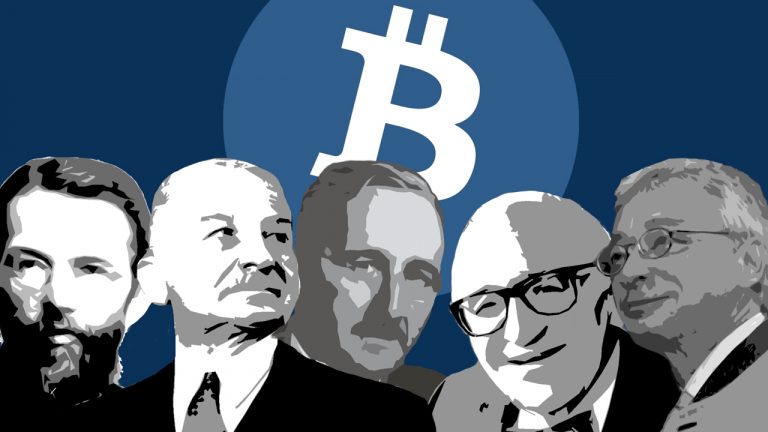
2020-8-9 10:30 |
It’s relatively common to see the regression theorem being mentioned in economic discussion, especially when it comes to whether or not something is money. This is surprising because the regression theorem has absolutely nothing to do with money or the definition of money. Regression theorem only involves prices and is really more a direct restatement of common sense.
To understand the regression theorem, we must understand the Austrian description of the establishment of prices – where does price come from? How do we know how much to sell good X for? The quick answer is the current price comes from past prices. The current price of an item comes from the price that it was yesterday, a week ago, a month, or a year ago. The price of a good comes from what the good was worth in the past, the price evolves and changes through the countless interactions in the market and originates from previous prices. By the same token, the value of money must too evolve from the past.
***The following is a featured essay written in 2015 by Brian Tockey and first appeared on the website notbeinggoverned.com (the site is no longer under maintenance). “Bitcoin, Regression Theorem, and Defining Money” was published on January 2, 2015, and is reprinted here on Bitcoin.com for historical preservation. The opinions expressed in this article are the author’s own. Bitcoin.com is not responsible for or liable for any opinions, content, accuracy or quality within the Op-ed article.***Here an objection was raised: “Monies have not always been in existence, they rise and fall. If price comes from the past and at some point in the past this money was not in existence, then where did the price come from in the first place? That certainly sounds like circular logic to me? In order to respond to this criticism, the regression theorem arose.
To quote Rothbard from Man, Economy, and State (source):
“To determine the price of a good, we analyze the market demand schedule for the good; this, in turn, depends on the individual demand schedules; these in their turn are determined by the individuals’ value rankings of units of the good and units of money as given by the various alternative uses of money; yet the latter alternatives depend in turn on given prices of the other goods,” Rothbard wrote. “A hypothetical demand for eggs must assume as given some money price for butter, clothes, etc. But how, then, can value scales and utilities be used to explain the formation of money prices, when these value scales and utilities themselves depend upon the existence of money prices?”
Rothbard added: “The solution of this crucial problem of circularity has been provided by Professor Ludwig von Mises, in his notable theory of the money regression. The theory of money regression may be explained by examining the period of time that is being considered in each part of our analysis. Let us define a “day? as the period of time just sufficient to determine the market prices of every good in the society.”
“On day X, then, the money price of each good is determined by the interactions of the supply and demand schedules of money and the good by the buyers and sellers on that day. Each buyer and seller ranks money and the given good in accordance with the relative marginal utility of the two to him. Therefore, a money price at the end of day Xis determined by the marginal utilities of money and the good as they existed at the beginning of day X. But the marginal utility of money is based, as we have seen above, on a previously existing array of money prices. Money is demanded and considered useful because of its already existing money prices. Therefore, the price of a good on day X is determined by the marginal utility of the good on day X and the marginal utility of money on day X, which last in turn depends on the prices of goods on day X – 1,” Rothbard’s Man, Economy, and State essay notes.
Rothbard further added:
Now the question may be raised: Granted that there is no circularity in the determination of money prices, does not the fact that the causes partially regress backward in time simply push the unexplained components back further without end? If today’s prices are partly determined by yesterday’s prices, and yesterday’s by those of the day before yesterday, etc., is not the regression simply pushed back infinitely, and part of the determination of prices thus left unexplained? The answer is that the regression is not infinite, and the clue to its stopping point is the distinction just made between conditions in a money economy and conditions in a state of barter.
This is the very essence of what regression theorem is – stating that the definition of price is not circular because the value of currency comes from the value of the good before it was a currency. Regression theorem doesn’t say anything about what makes a good a money or the qualities money has at all, only specifically that the definition of the value of currency is not circular because a beginning is specified.
It is important to note that like all evolutions, the evolution of a good into a money is gradual and not instant. Rothbard’s concept of a specific day is a point for the sake of argument. What is important is that a ‘start’ exists, the transition on a whole as a singular event.
Some people say Bitcoin isn’t money because it ‘violates regression theorem’ because it was not a good before it became money – this misses the point of what regression theorem is. In the context of the regression theorem, the value of Bitcoin is not circularly defined, but instead comes from the first transactions made. Research shows the first purchase of a good with BTC was 5-21-2010 when a user named ‘Laszlo’ bought ~$25 worth of pizza for 10,000 BTC.
This illustrates just how much evolution the price goes through – a little over three years and the value of Bitcoin evolved from that initial transaction, of $0.0025 USD/BTC to the current (as of this post) rate of [over $200] USD/BTC. Since a definite beginning is apparent, there is no circularity by defining Bitcoin’s value in terms of previous values. Whether or not Bitcoin is money is completely outside the scope of the regression theorem.
The concept of the regression theorem can be expanded into completely unrelated topics. One common phrase that comes to mind is the chicken and the egg. Where do chickens come from? Eggs. Where do eggs come from? Chickens. This circular definition is illogical and therefore the definition of chickens is flawed? Of course not. We know that at some point, a non-chicken laid a chicken egg. We know that chickens originally came from the first chicken egg laid by a non-chicken egg. By defining exactly where chickens and eggs started from, we have avoided the circularity in the definition, it’s the “regression theorem of chickens?.
This is the ‘common sense’ aspect of the regression theorem: definitions that sound circular are only circular if no beginning point is defined. Once a beginning point is evident, any accusation of circularity becomes completely invalid.
The regression theorem in the context of Austrian Economics is most certainly important to specifically counter-arguments that critics bring up, but care must be exercised to not apply it outside of its intended scope to avoid misunderstanding, misrepresentation, and false conclusions.
What do you think about Brian Tockey’s “Bitcoin, Regression Theorem, and Defining Money” essay? Let us know what you think in the comments section below.
The post Brian Tockey: Bitcoin, Regression Theorem, and Defining Money appeared first on Bitcoin News.
origin »Money ($$$) на Currencies.ru
|
|









